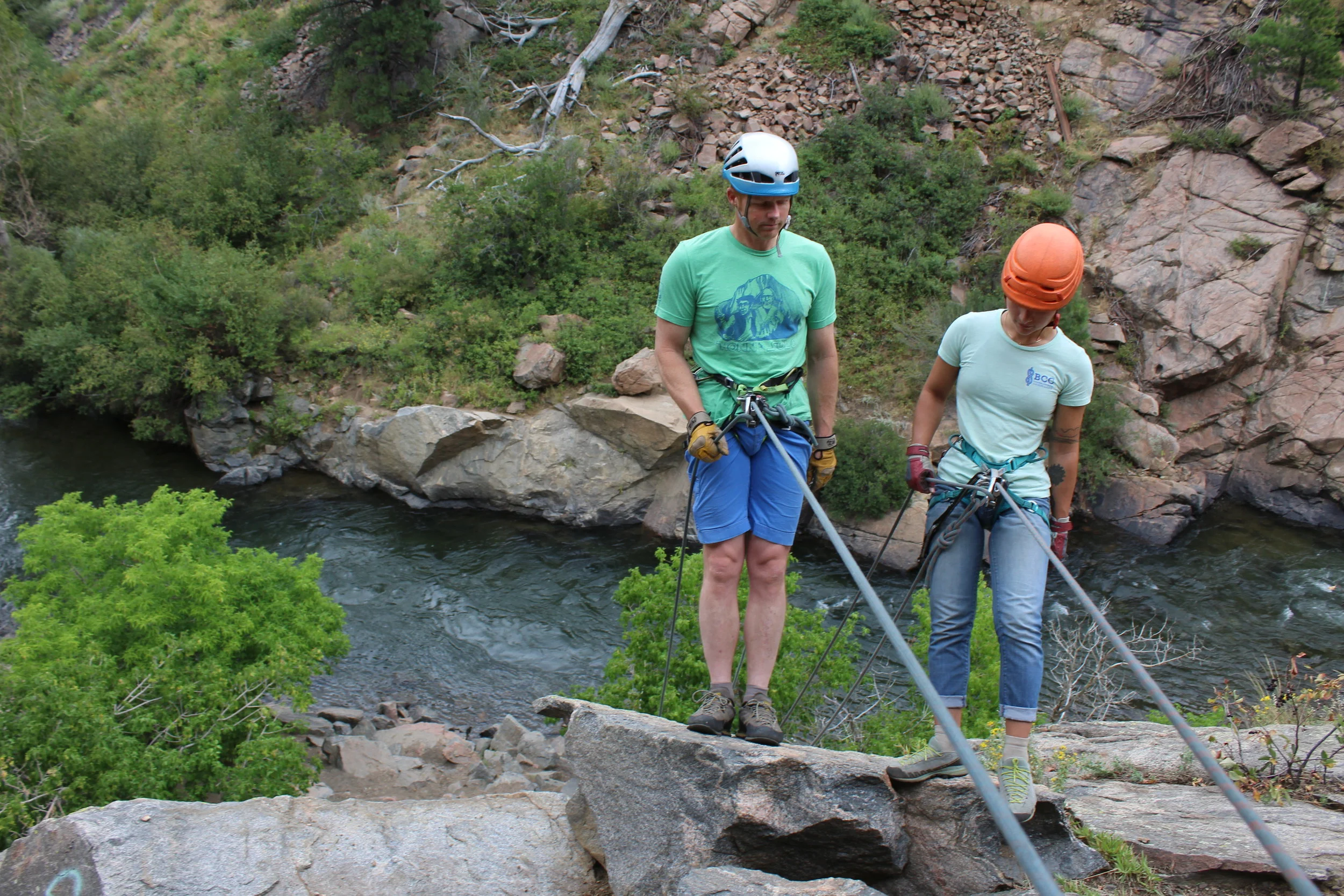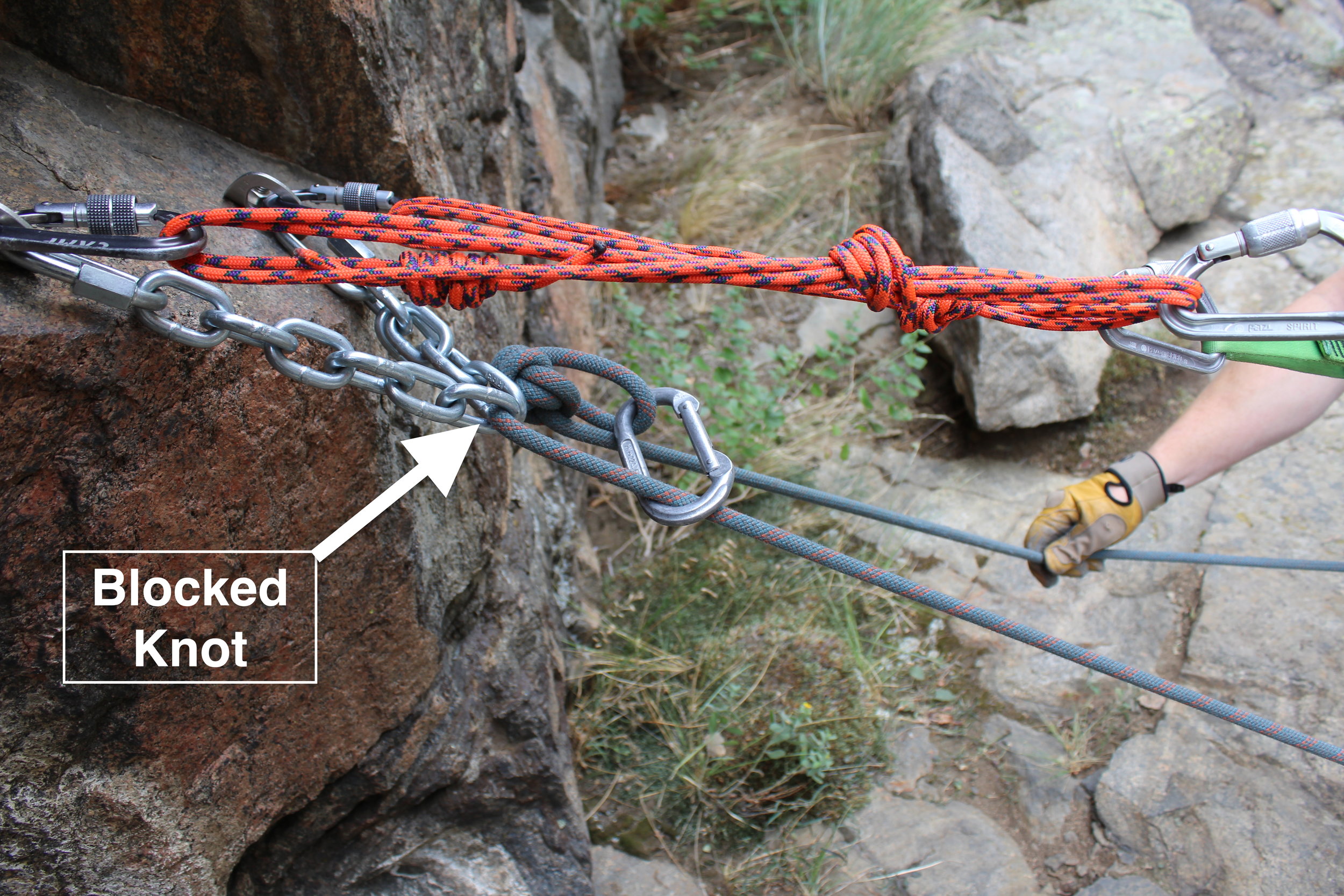It is not uncommon for rappelling climbers to commit to a simultaneous counterweight arrangement for rappelling. In this arrangement, the descending climbers can rappel simultaneously, and it is commonly referred to as simul-rappelling. When performed correctly, simul-rappelling results in a measurable efficiency, requiring less time for the two rappellers to move simultaneously than taking turns. However, the counterweight arrangement of simul-rappelling makes the climbers interdependent. If either climber loses control, makes a mistake in rigging, or if either side of the counterweighted rope is severed, both climbers suffer the consequences of the mishap/mistake.
As result, simul-rappelling is a technique that should only be selectively and carefully deployed. If not, if climbers fail to justify the technique or use it too causally, the probability of a single mistake affecting both climbers increases. Instead, the following principles can be used to justify simul-rappelling, or reject the technique when it is not justifiable, and they can provide some guidance for rigging a simul-rappel in a way that minimizes the opportunities for a catastrophic error.
Only the aggregated efficiencies of simul-rappelling justify the risks involved. On a single rappel, simul-rappelling may only save the team seconds, but multiple rappels can aggregate their efficiencies for a measurable benefit.
Simul-Rappelling magnifies the importance of best rappelling practices. Remaining secure during setup, using appropriate backups, managing the ends of the rope, and avoiding entanglements are concepts vital to all rappelling, but simul-rappelling arrangements demand that both rappellers adhere to sound fundamentals.
Since the risks of simul-rappelling are severe, and since efficiencies are part of what justifies the technique in the first place, the simplest setups with the fewest components are easier to double-check, easier to inspect, and harder to mistake.
Long well-bolted climbs like Space Boyz require many rappels to descend. In this kind of context, the efficiencies of simul-rappelling might justify the technique.
The rappel descents from a place like Seneca Rocks just aren’t long enough to necessitate Simul-Rappelling. It’s harder to justify such a consequential arrangement when the efficiencies don’t add up.
If a descending team decides to simul rappel, the rigging is critical. If both rappellers use an assisted braking device, like a grigri, if they enlist a knot-block at the anchor, and if they interconnect their tethers and anchor, they’ve set up a simul-rappelling rig that provides quick transitions at each anchor and provides the rappelling team with a few different kinds of backups.
Assuming a simul-rappel is justifiable, both rappellers can find efficiencies from using Assisted Braking Devices. As always, managing the ends of the rope is a wise choice.
Blocking a knot isolates at least one of the rappellers from the consequences of the counterweight arrangement.
The interconnected rappellers can give each other a backup when there is a blocked knot in the rope. Plus, the rappelling team can simply bump this anchor from one station to the next, staying connected during the entire rappel.






